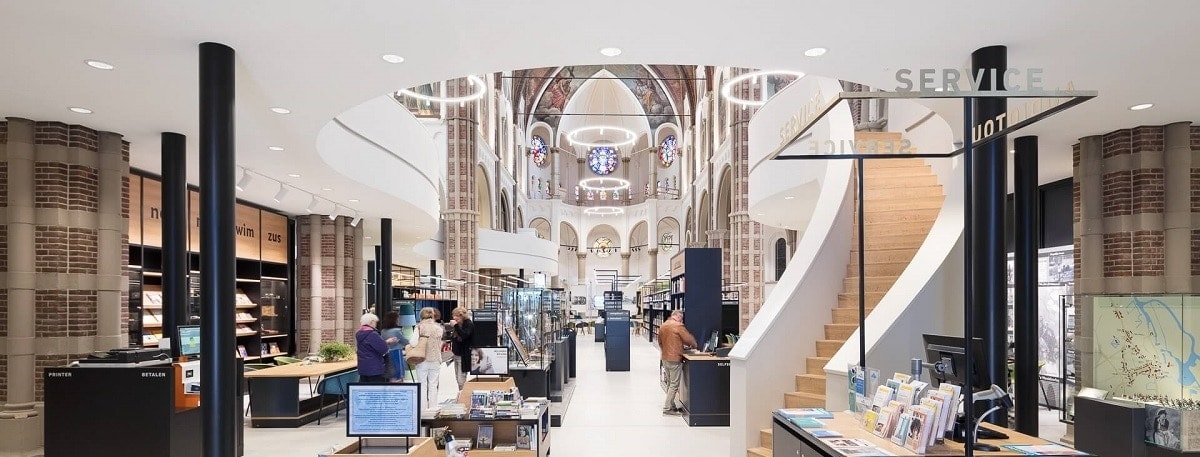
What is a deconsecrated church?
Places of worship can have exceptionally long lives. The Hagia Sophia, the Orthodox cathedral (360 A.C.) that is today a mosque (1261-present) and was previously a Catholic cathedral (1204-1261), is a good example of such a building with a thousand-year lifespan.
But every once in a while, it just so happens that an infrastructure ceases to be related to the faith from which it emerged. What happens to the building then? It’s deconsecrated. We’ll look at a few curious cases where these structures have become other sorts of spaces, often new cultural spaces. From libraries and skate parks to the most advanced supercomputers in the world, like the Marenostrum 4 in Spain.
Are there deconsecrated churches transformed into bookshops and libraries?
Selexyz Dominicanen, in Maastricht, Holland, is one of the most interesting, unusual bookshops in the world. As a 13th century Gothic church, this building was abandoned by the faith that brought it to life in 1294, and until 2006, it was in a state of advanced deterioration.
The proposal made by architects Merkx and Girod was very interesting for several reasons: they managed to save the building in a good state of conservation by converting it into a bookshop, and they also added useful space by building ingenious, asymmetric catwalks. These allow us to enjoy the temple’s frescoes and architecture, which is symmetrical.
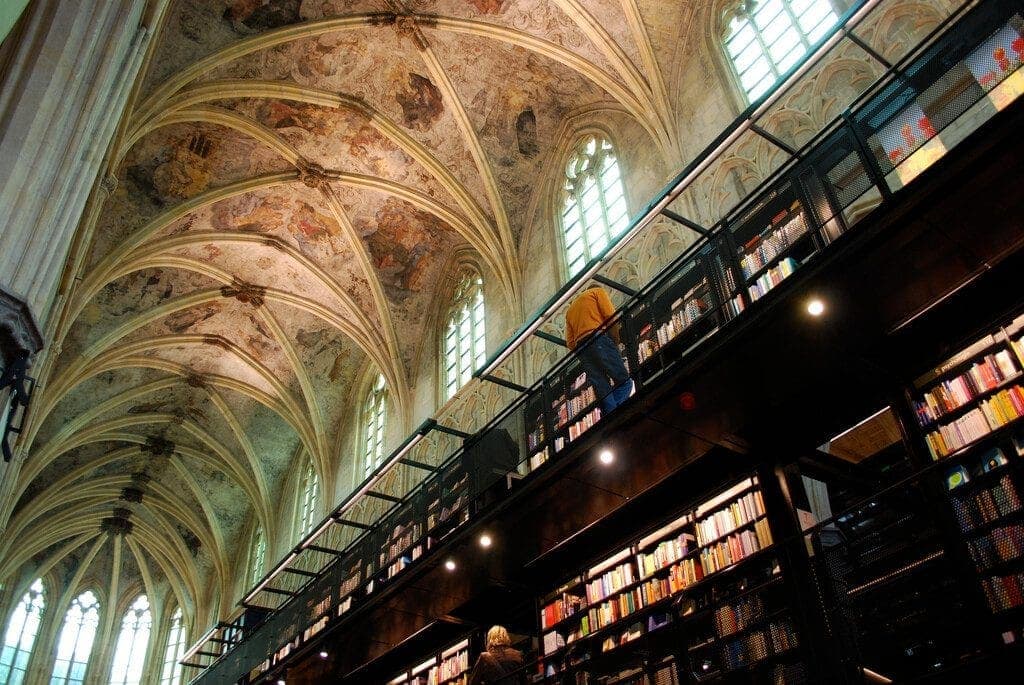
Image of Kevin Gessner
But if we’re looking for a library instead of a bookshop, we’ll find that, too. Doñana Palace, the old Spanish hunting lodge that has been turned into a technology center, houses a scientific library belonging to the CSIC (Consejo Superior de Investigaciones Científicas de España, the Spanish National Research Council) in a chapel that had fallen out of use for at least two decades. Though it is small.
Should we be looking for something bigger, we can travel to Vught (the Netherlands), where St. Peter’s Church now houses not only an enormous library and restaurant but also a museum. The header for this article welcomes us to the library space, which we can also see below, this time the transept.
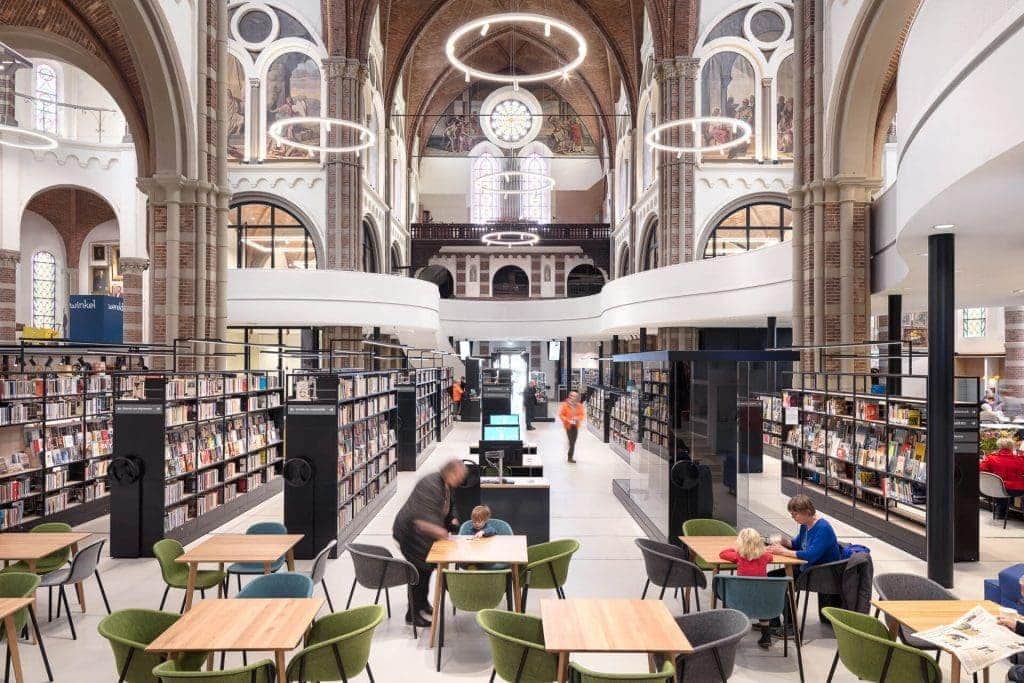
Image from Holland.com
How a deconsecrated church is used as a musical temple dedicated to dance?
Many religions still have music and dance at their core. We’re used to the pipe organ playing, choruses, the pace of prayer… But it may be a shock for us to go into a church once night has fallen to order a drink and listen to music, anything from classical fare to electronica.
That is exactly the case at the old Church of St. Joseph in Milan, a coffee shop/nightclub called Il Gattopardo. In 2001, it started to be used as a coffee shop/nightclub. If this seems interesting, it’s because of how the old temples were acoustically designed so that the sound travels easily. This lets the music – regardless of genre – reach every corner of the room. But St. Joseph’s isn’t the only example, just one of the most notable.
We found another in England, where a lovely abandoned church in Leeds had been used for years as an illegal rave under the name Halo. A businessman invested thousands of pounds in renovating the structure, and now it is a live music club (below) where historical heritage is cared for and gets a second life.
Proud proud and still on cloud 9 after @JackSavoretti got a number 1 album on Friday with #singingtostrangers I’m so excited I can’t even sleep!! #congratulationsJack Here is a small clip from the beautiful album launch @Church_Leeds @Crash_Records last Sunday #oneweekago ❤️?? pic.twitter.com/g1fntFkG4r
— Marisa (@marisa_deborah) March 24, 2019
It is estimated that, in England alone, at least 50,000 buildings that were formerly consecrated have gone through a similar transformation, everything from offices to pubs and spaces for recitals and discos, and approximately 20 churches are closed every year in that country. And it’s not alone. There were 200 abandoned churches in Denmark in 2015, and in Germany, at least 515 were closed from 2005 to 2015. If we want to conserve these historic spaces, we need to give them new life.
Can a deconsecrated church be used as a Skate Park or a circus school?
And maintaining enormous historical heritage is costly, especially when the inside houses furnishings (sculptures, paintings, frescoes). Music is a way to restore these spaces, as are dance and less conventional disciplines, like circus arts and skating. In Llanera (Asturias, Spain), a new mecca for skaters opened in 2015.
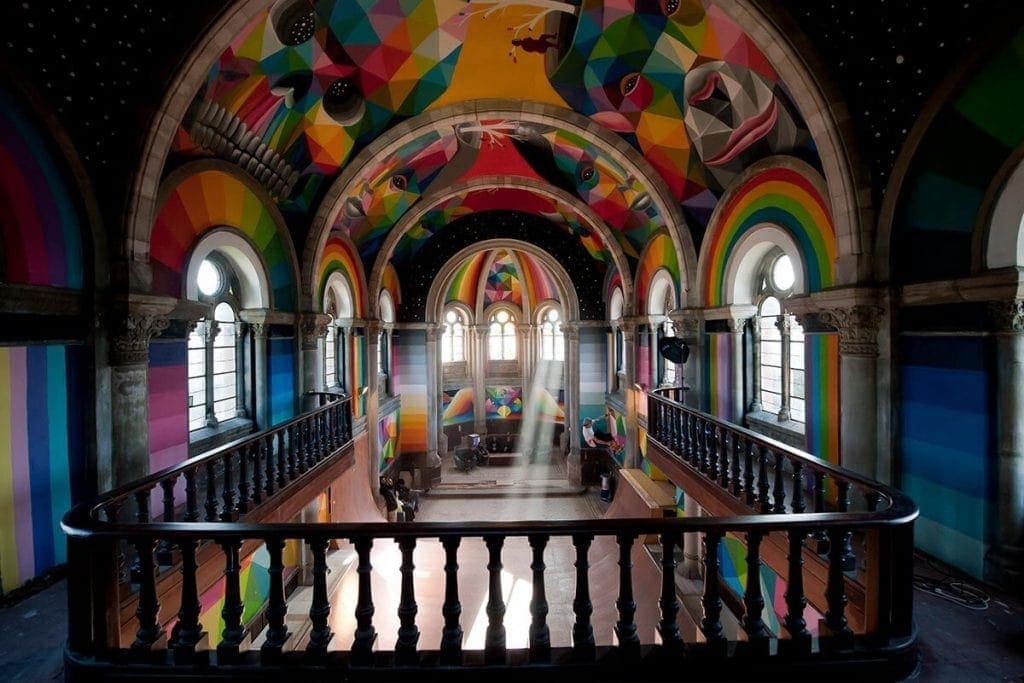
Image of Inkandmovement.com
Asturias has 200 days of rain a year, which means that skateboarding aficionados don’t have a place to practice. In 2014, world-renowned artist Okuda San Miguel kickstarted crowdfunding to convert this space, which was left abandoned to the elements, into a new place of worship. The church was missing elements like frescoes that may have been damaged, which meant that it was an ideal space halfway between ancient and modern art.
Something similar happened in Quebec (Canada) in 2003. The Church of the Holy Spirit had been closed for years and fell into disrepair, and Quebec’s Circus School was looking for a new location for their acrobatic practices. In an agreement with the city council, they managed to take over maintenance of the space and carry out their activities there.
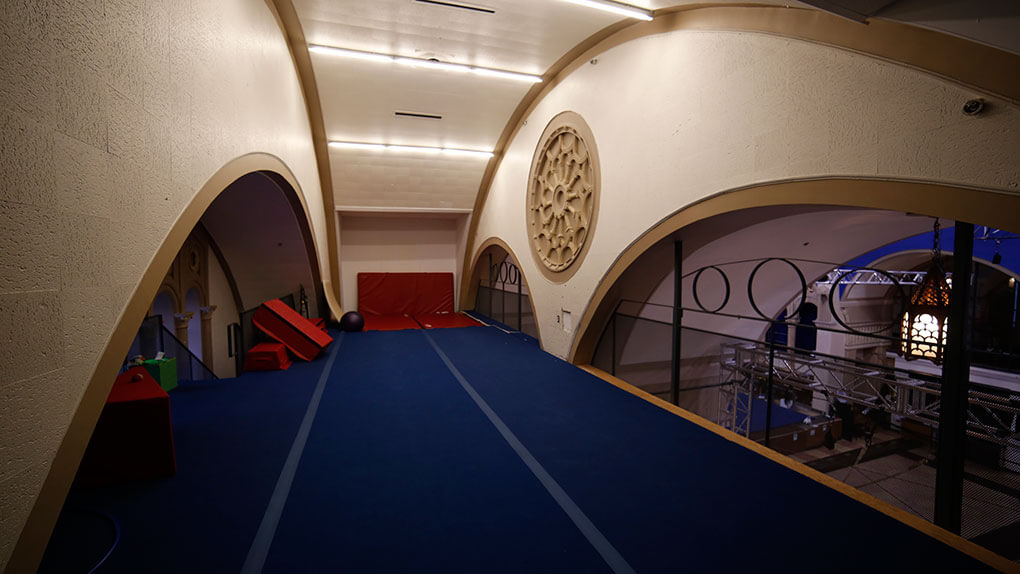
Image of École de Cirque
Now, Quebec is the only city in the world with a circus school inside a former place of worship. We’re sharing a very unusual photo of the church’s loft. There, a useful space that wasn’t there before was designed, thanks to the work of renovation architects. In the back, we can see the main stage and how the original architectonic elements are still present.
Many of these projects require not only a team of architects who are knowledgeable about the hidden spaces in places of worship. They also need historians for consultation on interventions that may be done, or institutional support to make these transformations look good, which impacts a site of cultural heritage that belongs to everyone.
Has anyone ever imagined a supercomputer in a deconsecrated church?
Early in 2004, a supercomputer was installed in a chapel on the North Campus of the Polytechnic University of Catalonia (Spain). It was the first big supercomputer in Spain, and, at the time, it was the most powerful in all of Europe. If it means anything to the reader, it had 9 TiB of RAM memory.
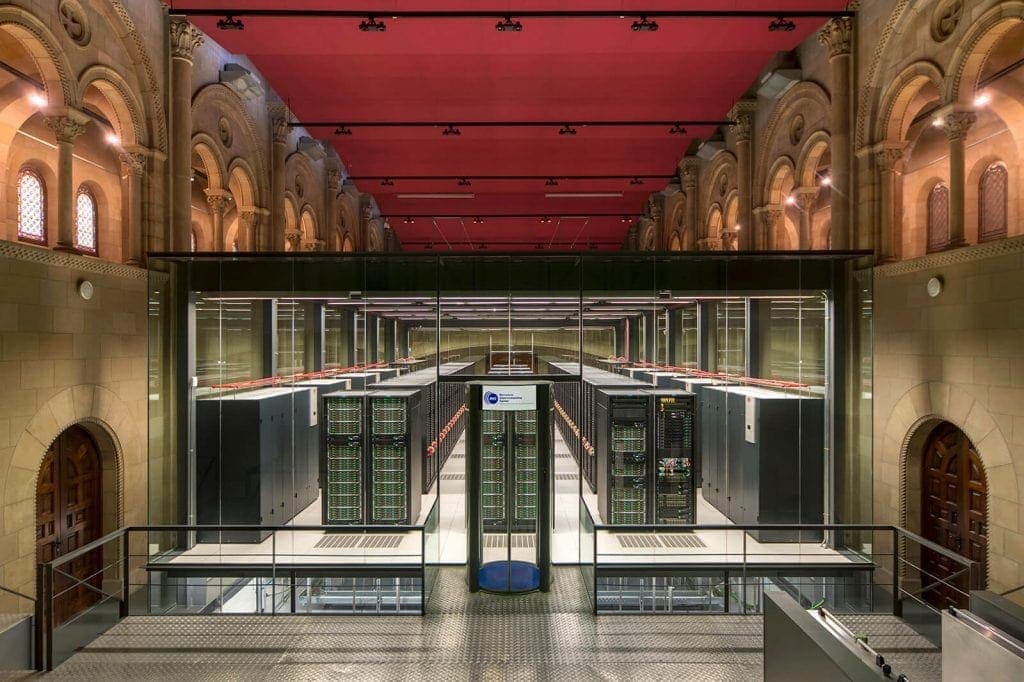
Imagen de BSC-CNS
In the image above, we can see how interesting the contrast between the arches and crystal and the servers inside is. The past and future wrapped in each other like a set of Russian dolls. This division of volume (in the image, we can see how there are facilities under the racks that reach the chapel’s floor) is necessary for cooling and conserving the building.
The servers generate heat, and that is why they must be cooled (in some ways, just like the columns for protection), but they also cause little vibrations. Because of this last reason, a complex metal structure is responsible for distributing them without harming the past, showing that both ages can coexist in ways that allow them to also contribute to knowledge and culture.





There are no comments yet